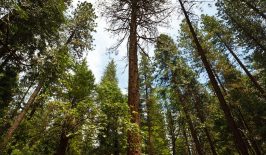Around 7.7 million hectares (19 million acres) of bushland were destroyed in this year’s Australian bushfire season. Although torrential downpours have now extinguished the most major blazes, it will be some time before the full extent of the damage is known. Despite this, initial estimates are not encouraging, with some placing the casualty figure amongst Australia’s diverse wildfire population at around 1 billion animals killed – potentially wiping out some endangered species.
Traditionally, forests and bush can rapidly regrow following a fire and bushfires do play a role in the natural ecosystem of the Australian outback. However, the scale, spread and intensity of this last bushfire season has cast doubts about the ability of some areas to rapidly regrow. It has been suggested that the heat may have been so intense that even fire-resistant plant life may have been destroyed.
Therefore, in order to repair the damage new methods may be needed. One Australian start-up – AirSeed Technologies – is looking towards drone technology as a means to reforest vast swathes of land.
Seed Capital For Restoring the Outback
Co-founded by mechanical engineer Andrew Walker and geo-spatial data expert Andries Louw, AirSeed has developed a specialised aerial drone which, they claim, can rapidly plant seeds at a rate far in excess of traditional methods. By using artificial and data-driven intelligence the AirSeed technology is said to be able to plant as many as 40,000 seeds a day – around 2 every second.
In traditional reforestation, seedlings are first grown in nurseries before being transported to planting areas via refrigerated supply lines. These seedlings are then manually planted in a slow and labour-intensive way, usually only in areas where resources can be properly mobilised. AirSeed’s system is not only allegedly 95 percent faster, but can also access areas where traditional reforestation would be impossible or prohibitively expensive.
AirSeed Technologies has a range of different measures in place to help ensure that the seeds planted actually take root, develop and grow as intended. They use only high grade seed stock (seeds that have shown to have high germination rates when tested in lab conditions) and they encase those seeds within carbon seed pods that act as a protective barrier against animals such as birds, rodents and insects. Those seed pods are then planted just below the top soil surface, reducing seed loss through high winds and heavy rains. And germination is of course only the first part of the puzzle. To promote strong and healthy growth, AirSeed also told us tha also developed a site specific, nutrient-rich biotech solution that helps stimulate early stage growth of the seeds (although they weren’t able to share any more details about this due to privacy restrictions).
The company has already started to develop a track record – albeit still a modestly sized one. AirSeed Technologies recently returned from a South African trial where 10,000 seeds were planted over a 10 hectare area. They’re also undertaking a paid trial with a food and agri-business company located in Central West Africa. If the trial is successful, they will have the opportunity to conduct a commercial project to plant an additional 200 million trees across the African continent.
Following this success, AirSeed Technology is now in discussions with the Australian government to commence a re-seeding trial in areas of New South Wales devastated by the recent fires. However, the scale of the fires and Australia’s relatively unique landscape will present new challenges to be overcome, and so any replanting effort will also require a long term monitoring effort over two wet and two dry seasons. Walker told ZDNet:
“That will help us find out what specific problems will exist in Australia, what we will come across during an extended dry period, is that going to be the major factor, and will we need to look at means of how to deal with that, whether that’s through select species reforestation or through doing the monitoring process in a very specific way to help the seedlings in early stage of growths.”
Currently, AirSeed is also teaming up with the University of Technology Sydney to develop methods and data which can be used to aid the technology in replanting mangrove forests destroyed by the fires. All told, the team hopes to plant 100 million trees across the globe by 2023.
It’s not the first time that drones have been used to aid reforestation efforts and restore ecosystems around the globe. One company is using tree-planting drones to replant mangrove forests in Myanmar, while in Spain another drone company is their airborne drone planters with “smart seed pods” that protect and nourish the seeds – helping ensure that they will grow into plants.
With recent scientific research telling us that rapid and extensive forest restoration is one of, if not the best, climate change solution available today – with the potential to remove up to two thirds of man-made CO2 emissions (!) – tech that can speed up the process of planting new trees has a crucial role to play in the future of our planet.






